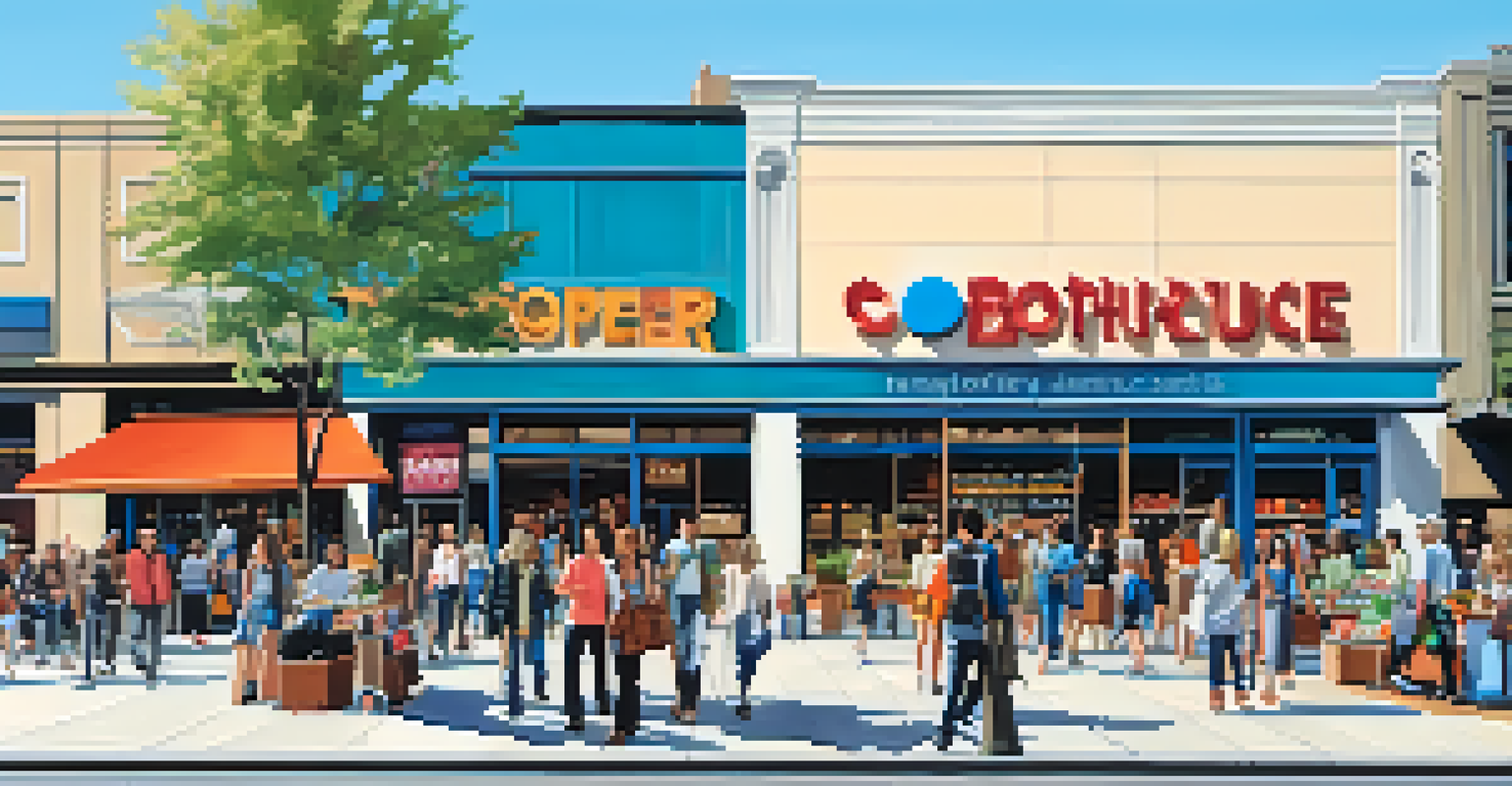The Influence of Local Amenities on Real Estate Prices

Understanding Local Amenities and Their Types
Local amenities refer to the facilities and services available in a neighborhood, such as parks, schools, shopping centers, and public transport. These amenities play a crucial role in determining the attractiveness of an area for potential homebuyers. For instance, a neighborhood with a well-rated school can often see higher demand from families looking to settle down.
Location, location, location is the mantra of real estate, but it’s not just about the house; it’s about the community surrounding it.
Not all amenities are created equal; some have a more significant influence on real estate prices than others. For example, proximity to public transport can be a game changer for commuters. People are often willing to pay a premium for easy access to trains and buses, which can drastically reduce their daily travel time.
Ultimately, the presence of desirable amenities can enhance the overall quality of life in a neighborhood, making it a hot spot for real estate. As a result, properties located near such amenities often command higher prices, illustrating the direct correlation between local facilities and property values.
The Role of Schools in Real Estate Pricing
When it comes to local amenities, schools often top the list in terms of importance for families. A strong school district can significantly increase home values, as parents prioritize their children's education and are willing to invest in a location that offers quality schooling. For instance, homes located within the boundaries of highly-rated schools can see price surges compared to those in less favorable districts.

Beyond just academic reputation, the availability of extracurricular activities and community engagement tends to attract buyers. Parents are not only looking at test scores but also at how involved the school is in the community. A school that hosts events, provides resources, and engages with families can add to a neighborhood's charm.
Local Amenities Boost Home Values
Proximity to desirable local amenities like schools, parks, and shopping centers significantly increases property demand and market prices.
In essence, schools do more than just educate; they serve as a pivotal point for community cohesion. When families feel connected to the educational institutions in their area, it fosters a sense of belonging that can enhance property values significantly.
How Parks and Recreation Areas Enhance Value
Parks and recreational spaces are more than just green patches in urban settings; they are vital local amenities that can elevate real estate prices. Properties near parks often attract buyers who value outdoor spaces for leisure and family activities. A well-maintained park not only beautifies the area but also enhances the lifestyle of its residents.
A neighborhood is not just a place to live, but a lifestyle that can enhance your quality of life.
Moreover, parks can serve as social hubs, bringing communities together through events and activities. This sense of community can make a neighborhood more appealing, leading to increased demand for homes in the vicinity. Buyers often envision weekend picnics, children playing, and evening strolls, which can influence their purchasing decisions.
Consequently, the presence of parks can create a ripple effect on property values. Homes located near popular recreational areas typically see a premium on their prices, reflecting the desirability of living in a vibrant, community-focused environment.
Shopping Centers and Their Impact on Neighborhood Appeal
Shopping centers are another essential local amenity that can significantly impact real estate prices. Proximity to grocery stores, boutiques, and entertainment options can make a neighborhood far more attractive to potential buyers. The convenience of having shopping options nearby saves time and enhances quality of life, which many people are willing to pay for.
However, the type and quality of shopping centers matter as well. High-end retail options or trendy restaurants can boost property values, while poorly maintained or underperforming centers might have the opposite effect. Buyers often assess the overall atmosphere of an area, and vibrant shopping districts contribute positively to that perception.
Schools Influence Buyer Decisions
Strong school districts play a crucial role in attracting families, often leading to higher home values in those areas.
In summary, shopping centers can act as both a convenience and a lifestyle choice for potential homeowners. When a neighborhood is known for its vibrant shopping culture, it can lead to increased demand and higher property prices.
Public Transportation: A Key Player in Real Estate Value
The availability of public transportation can be a significant factor affecting real estate prices, especially in urban areas. Properties located near train stations or major bus routes often see higher demand due to the convenience for commuters. This is particularly true for professionals who rely on public transport to navigate busy city life.
Easy access to public transport not only saves time but also reduces the overall cost of living for residents. People living near transit options may find they can forgo owning a car, saving on expenses like gas and maintenance. This financial aspect becomes an attractive selling point for homes in transit-friendly neighborhoods.
In essence, public transportation can enhance a neighborhood's appeal and, in turn, influence real estate prices. As more buyers prioritize convenience and accessibility, properties near these transport hubs tend to command higher market values.
Local Safety and Its Effect on Property Prices
Safety is a fundamental concern for anyone looking to buy a home, making it a crucial local amenity impacting real estate prices. Areas with low crime rates tend to attract more buyers, as families and individuals prioritize their well-being. As a result, properties in safer neighborhoods often see elevated price points.
Moreover, a neighborhood's reputation for safety can be bolstered by community engagement and active policing. Residents who feel secure in their environment are more likely to invest in their homes and neighborhoods, contributing to a positive cycle of property value increases. Community watch programs and local events can also foster a sense of security and belonging.
Safety Drives Real Estate Demand
Neighborhoods with low crime rates are more appealing to buyers, resulting in elevated property prices and community investment.
Ultimately, the correlation between safety and property values is clear. Buyers are more inclined to pay a premium for homes situated in safe neighborhoods, highlighting the importance of local amenities in real estate pricing.
The Impact of Local Amenities on Market Trends
As buyer preferences evolve, local amenities can significantly influence real estate market trends. Areas that enhance their amenities—be it through new parks, shopping centers, or improved public transport—often see a boost in property values. This trend highlights the need for local governments and developers to invest in community enhancements to attract residents.
Moreover, the rise of remote work has shifted buyer priorities, with many now seeking homes in suburban areas that offer both space and access to local amenities. This shift has led to increased demand in previously undervalued neighborhoods, changing the landscape of real estate prices. Areas that adapt to these new preferences can experience substantial growth.

In summary, local amenities play a pivotal role in shaping market trends. As communities evolve and adapt to the changing needs of buyers, the influence of amenities on property values will continue to be a key factor in the real estate landscape.
Conclusion: The Lasting Influence of Local Amenities
In conclusion, local amenities significantly shape real estate prices, impacting buyer preferences and market trends. From schools and parks to shopping centers and public transport, these features contribute to the desirability of a neighborhood. As such, homebuyers should carefully consider the amenities in their prospective areas, as they can greatly influence their living experience.
Investing in properties located near desirable amenities can often yield higher returns over time. Buyers who prioritize amenities that align with their lifestyle are likely to find greater satisfaction in their homes. This means that understanding local amenities is not just about immediate costs, but also long-term value.
As communities continue to evolve, the importance of local amenities will only grow. For anyone looking to buy or sell real estate, recognizing the influence of these features can lead to informed decisions and successful investments.